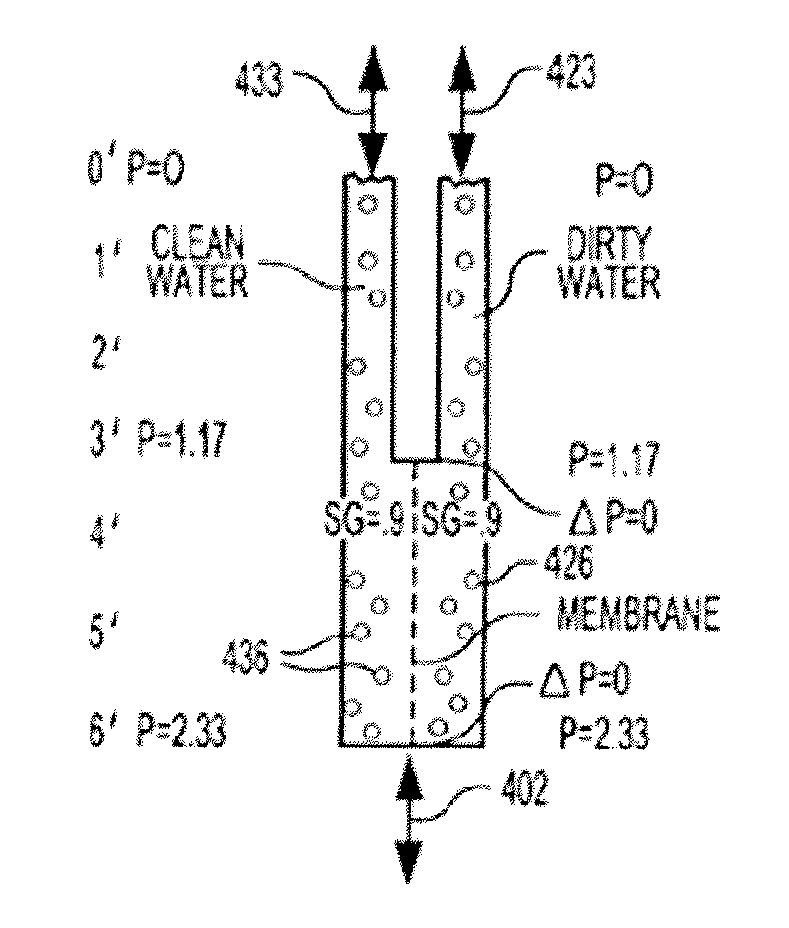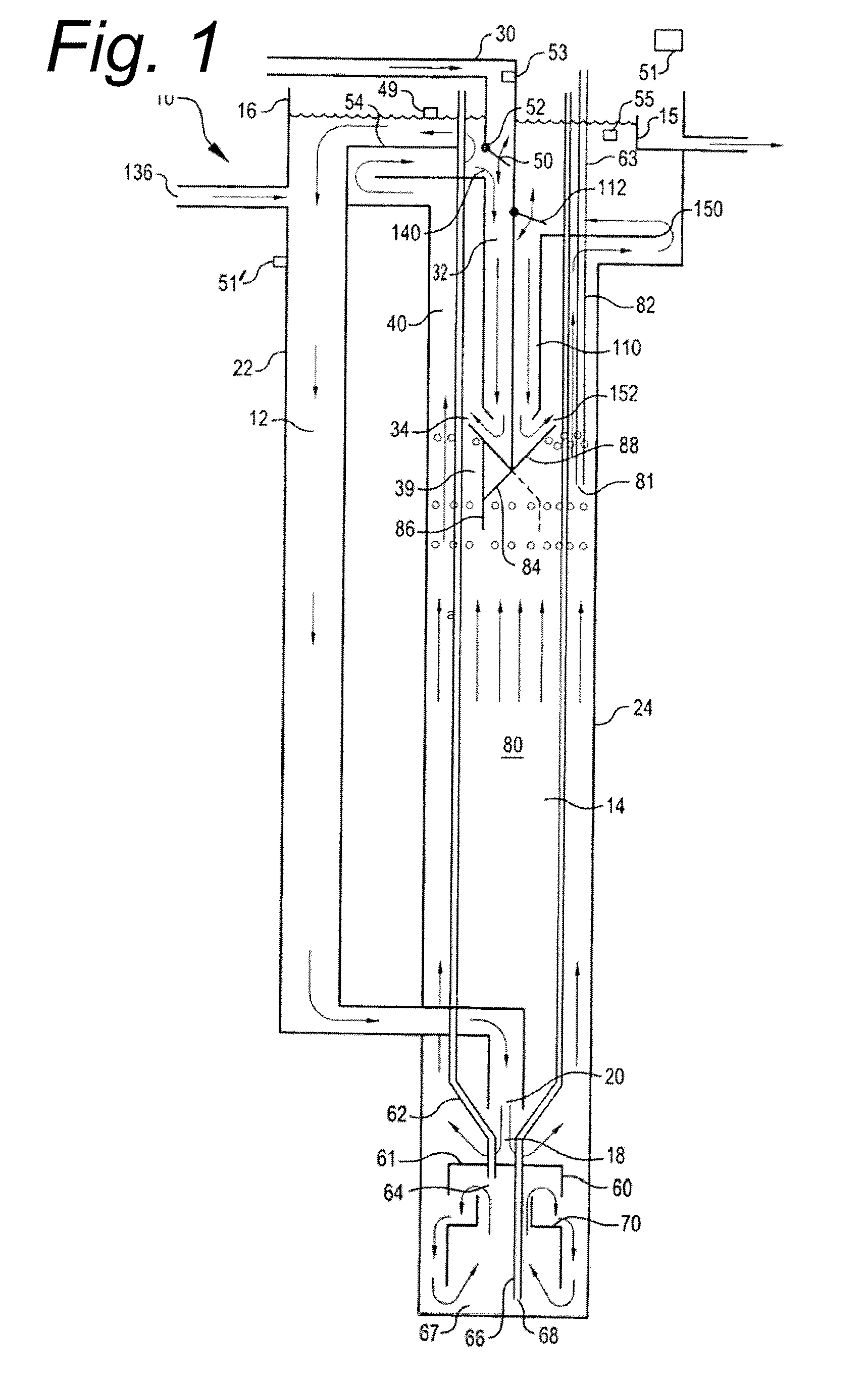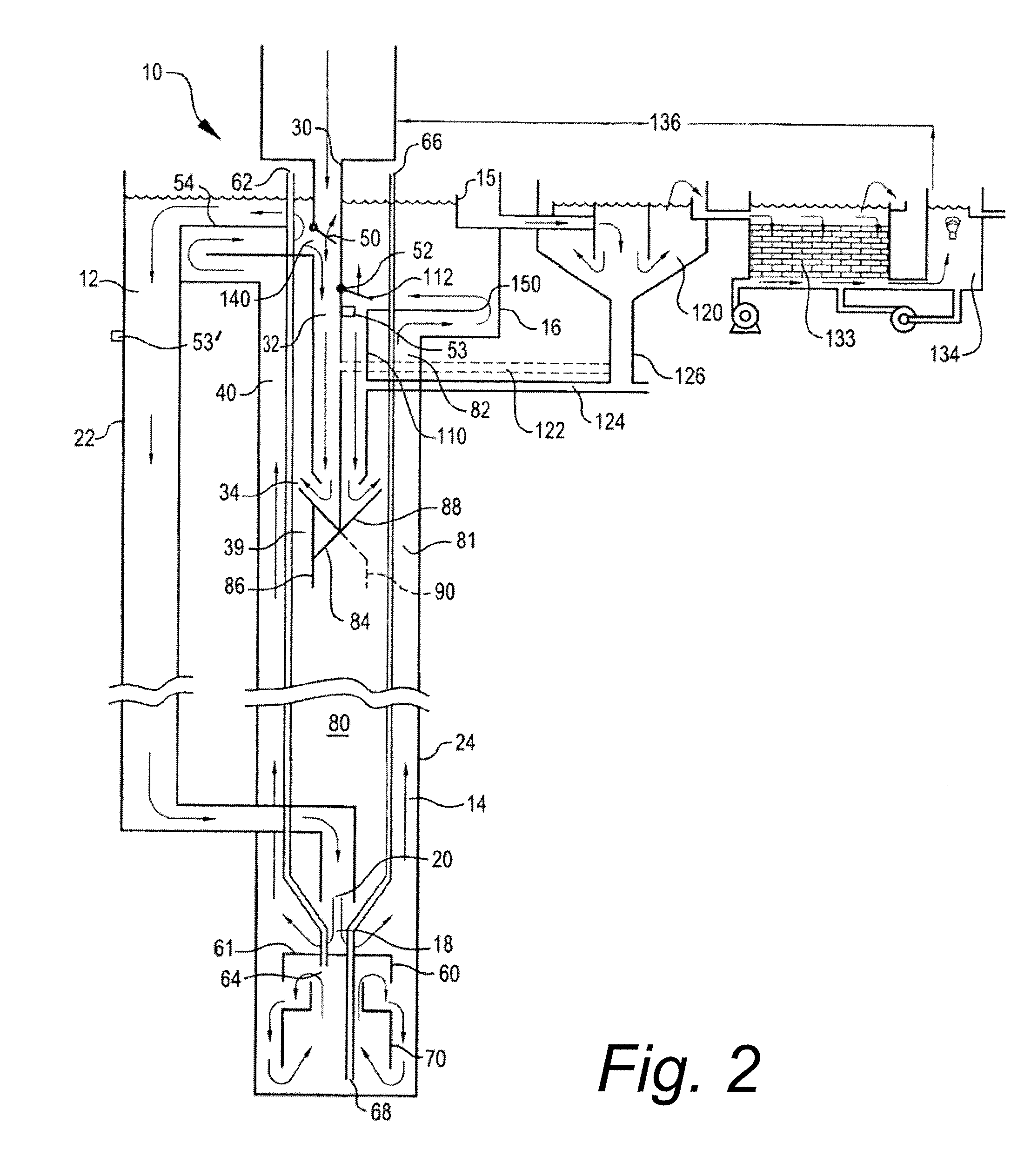Methods and Devices for Improved Aeration From Vertically-Orientated Submerged Membranes
a vertical orientation, membrane technology, applied in the direction of membranes, filtration separation, separation processes, etc., can solve the problems of requiring substantial processing, aerating or facilitating processing of sewage, lack of water, etc., to improve shearing, improve shearing, and enhance aeration
- Summary
- Abstract
- Description
- Claims
- Application Information
AI Technical Summary
Benefits of technology
Problems solved by technology
Method used
Image
Examples
embodiment 880
[0385]FIG. 27A illustrates a gas ribbed diffuser embodiment 880 having a flexible diaphragm 921, air ports 924 equipped with a panel of manometers lines 928 to obtain pressure measurements of a spiral pattern of tapped holes 936 and to permit the observation of emerging bubbles within observation lanes 932 mounted on the outside of the diffuser 880. The holes 936 are space in 5-hole increments per observation lane 932 in the spiral pattern, are approximately 0.030 inches in diameter, and spaced approximately 0.3 inches apart. The ribbed diffuser is tapped for manometer pressure measurements circumferentially for a plurality of 0.030″ diameter holes tapped at different elevations. The spiral pattern allows for direct observation of air-bubble streams at different elevations due to the lateral displacement along the spiral pathway. Otherwise, had the holes been place more or less in horizontal ascending rows, the simultaneous emerging of multiple bubble streams would have obscured or ...
embodiment 1300
[0428] The alternate diffuser embodiment 1300 combines the cone-shaped diffuser 760 of FIG. 23A with a porous gas diffuser cylinder membrane 1330 that extends from the conically shaped diffuser membrane 720. The cone-shape diffuser includes the conical support element 764 substantially similar to that illustrated in FIG. 23A that also includes a cylindrical support extension 764A that is continuous with the conical support element 764. Porous surface 720 extends from the conical region onto the cylinder. Located in-between the cylinder 720 porous region and the cylinder support extension 764A is a longer version of the gas impermeable flexible diaphragm 772 that extends over the conical support 764 onto the cylindrical extension support 764A. 1330. The cylinder extension 1330 is capped with the bubble barrier 1340. Particular embodiments of the bubble barrier 1340 includes an inverted cone shape and may be made of metal materials to thwart gas accumulation underneath the cylinder ex...
PUM
| Property | Measurement | Unit |
|---|---|---|
| pore size | aaaaa | aaaaa |
| pore size | aaaaa | aaaaa |
| diameter×10 | aaaaa | aaaaa |
Abstract
Description
Claims
Application Information
 Login to View More
Login to View More - R&D
- Intellectual Property
- Life Sciences
- Materials
- Tech Scout
- Unparalleled Data Quality
- Higher Quality Content
- 60% Fewer Hallucinations
Browse by: Latest US Patents, China's latest patents, Technical Efficacy Thesaurus, Application Domain, Technology Topic, Popular Technical Reports.
© 2025 PatSnap. All rights reserved.Legal|Privacy policy|Modern Slavery Act Transparency Statement|Sitemap|About US| Contact US: help@patsnap.com



